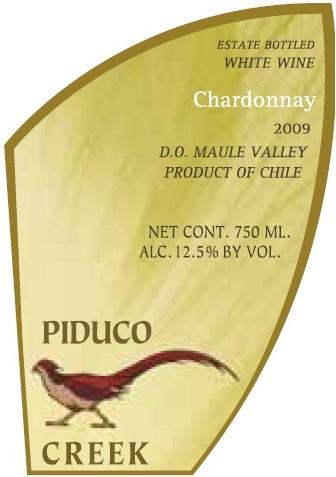2009 Maule Valley Chardonnay
Piduco Creek White Wine is a delightful expression of Chardonnay from the renowned Maule Valley, showcasing the region's unique terroir. This vintage, crafted in 2009, presents a lovely straw-yellow hue that invites exploration. On the palate, it offers a full-bodied experience, complemented by a vibrant acidity that brings brightness to each sip. The fruit intensity is prominent, with enticing notes of ripe pear, green apple, and hints of citrus that create a refreshing profile. The wine is beautifully dry, with a smooth texture that lingers elegantly. This Chardonnay not only embodies the essence of the Maule Valley but also delights with its well-balanced characteristics, making it an excellent choice for any occasion.
Piduco Creek White Wine is a delightful expression of Chardonnay from the renowned Maule Valley, showcasing the region's unique terroir. This vintage, crafted in 2009, presents a lovely straw-yellow hue that invites exploration. On the palate, it offers a full-bodied experience, complemented by a vibrant acidity that brings brightness to each sip. The fruit intensity is prominent, with enticing notes of ripe pear, green apple, and hints of citrus that create a refreshing profile. The wine is beautifully dry, with a smooth texture that lingers elegantly. This Chardonnay not only embodies the essence of the Maule Valley but also delights with its well-balanced characteristics, making it an excellent choice for any occasion.




